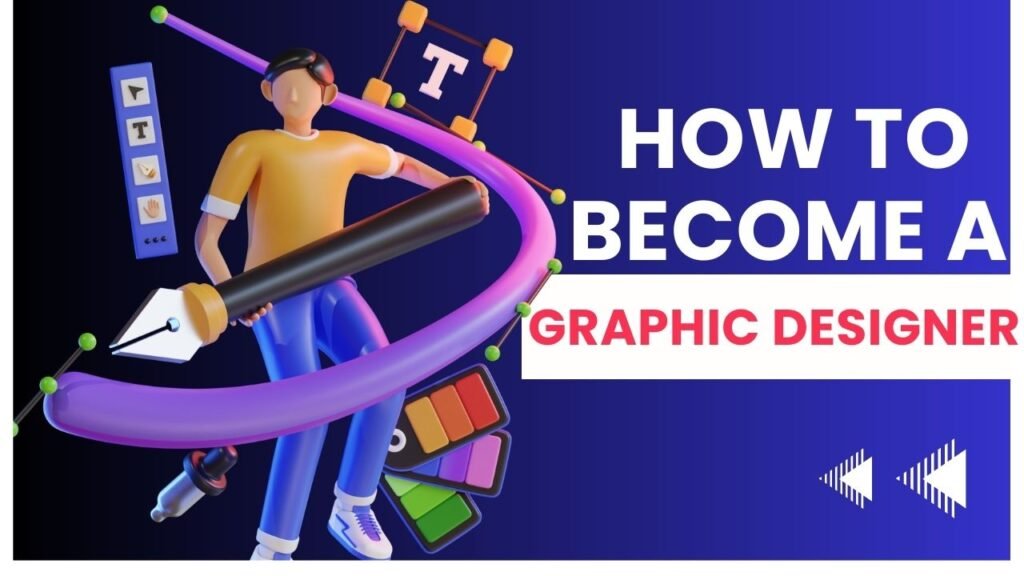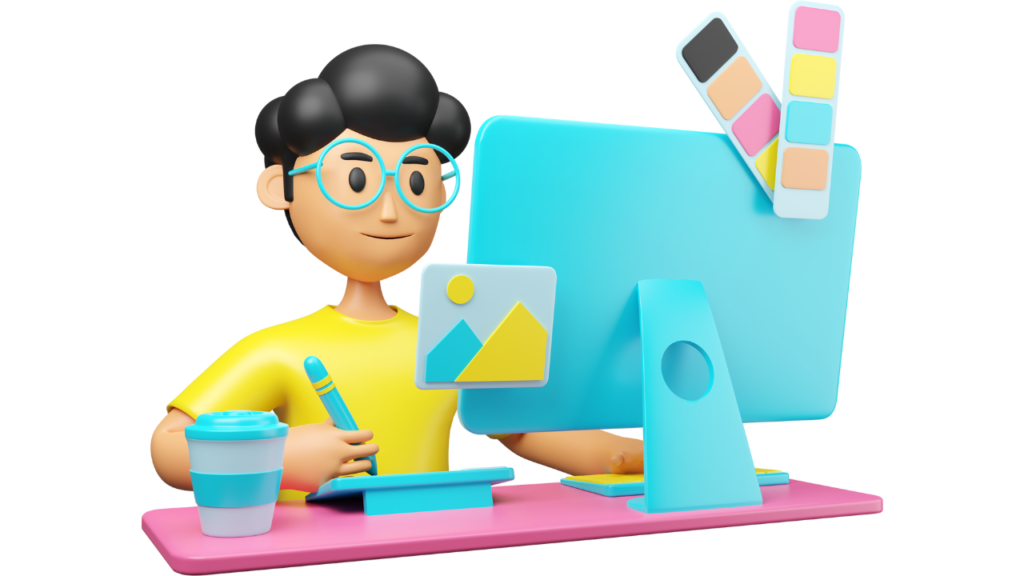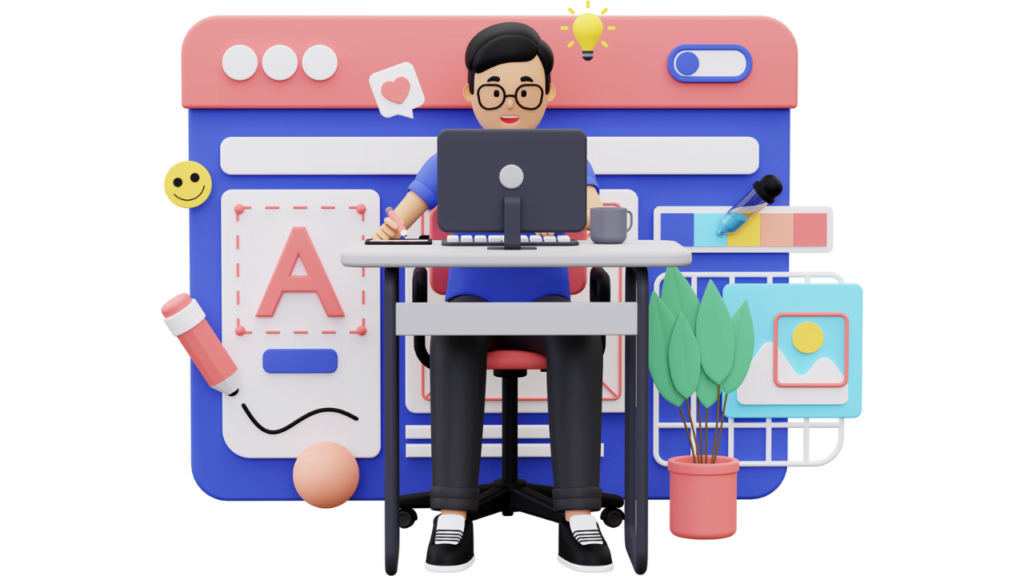Mastering the Path to Becoming a Successful Graphic Designer in 2023

Are you captivated by the power of visuals? Do you find yourself drawn to the artistry that transforms ideas into striking designs? If so, you’re on the verge of embarking on an exciting journey towards becoming a Successful Graphic Designer. In this comprehensive guide, we’ll walk you through every step of the process, from laying a strong foundation to mastering the art of visual communication. So, let’s dive in and explore the world of graphic design!
How to Becoming a Successful Graphic Designer
Graphic design is more than just aesthetics; it’s about creating meaningful visual experiences that resonate with audiences. As the visual world evolves, the role of graphic designers becomes increasingly vital. From shaping brand identities to enhancing user experiences, graphic design permeates various aspects of our lives.
To truly grasp the significance of graphic design, let’s delve into its evolution. Decades ago, graphic design was confined to print media, such as magazines and posters. Today, it encompasses digital platforms, web design, animation, and more. The fusion of creativity and technology has paved the way for graphic designers to explore uncharted territories.
Building a Strong Foundation
Before diving into the intricate world of graphic design, it’s essential to cultivate a creative mindset. Design thinking, a problem-solving approach, forms the bedrock of innovative design. By adopting this mindset, you’ll learn to dissect challenges and craft solutions that resonate visually.
With a solid foundation in design thinking, it’s time to master the basics. Typography, color theory, and composition are the cornerstones of every design. Typography isn’t merely about selecting fonts; it’s about understanding how different typefaces evoke distinct emotions. Color theory, on the other hand, delves into the psychology behind colors and their impact on human perception. Lastly, composition guides the arrangement of elements within a design, ensuring visual harmony.
Essential Graphic Design Tools and Software
A graphic designer’s toolkit is incomplete without proficiency in industry-standard software. The Adobe Creative Suite, including Photoshop, Illustrator, and InDesign, empowers designers to bring their visions to life. Photoshop is your go-to for manipulating and enhancing images, while Illustrator specializes in vector graphics, enabling scalable and precise designs. InDesign, on the other hand, excels in layout design for print and digital publications.
To further elevate your work, consider integrating graphic tablets into your workflow. Devices like Wacom and iPad Pro offer a hands-on experience that bridges the gap between traditional artistry and digital design.

Acquiring Technical Skills
Technical prowess is the bridge between imagination and execution in graphic design. Begin by mastering vector graphics with Illustrator. This software empowers you to create crisp, scalable designs—ideal for logos, icons, and illustrations. On the raster graphics front, Photoshop reigns supreme. Its array of brushes and tools allows you to manipulate pixels with precision, making it perfect for photo manipulation and digital painting.
As the digital landscape expands, UI/UX design has emerged as a crucial subfield. Designing for the web demands an understanding of user-centered principles. A well-crafted user interface enhances user experiences, while user experience design ensures seamless interactions. It’s the marriage of aesthetics and functionality.
The Art of Creating Logos
Logos are the visual representation of a brand’s essence. They must encapsulate a brand’s identity, values, and aspirations in a single, memorable mark. Achieving this demands a deep dive into the psychology of shapes, colors, and symbols.
Consider the FedEx logo—an arrow subtly embedded in the negative space between “E” and “x.” This ingenious design represents movement and precision, reflecting the company’s core values. A successful logo sparks recognition and evokes emotions, forming a powerful connection with the audience.
Print Design Principles
In a digital age, the allure of print endures. Brochures, flyers, business cards—they all play a tangible role in brand communication. Print design requires meticulous attention to detail. The choice of paper, color accuracy, and print quality all contribute to the final product’s impact.
When preparing artwork for print, it’s crucial to understand file formats and considerations. Printers require high-resolution files in formats like PDF or TIFF to ensure clarity and fidelity. Bleed and trim areas prevent white borders and guarantee seamless designs.
Digital Illustration and Beyond
The realm of graphic design extends beyond static visuals. Digital illustration allows you to create imaginative worlds and characters with limitless possibilities. From realism to minimalism, the style you choose depends on your creative vision.
Animation adds another layer of dynamism to your skill set. With software like After Effects, you can breathe life into your designs, making them dance, morph, and transform. Whether it’s a captivating GIF or a complex motion graphic, animation amplifies your storytelling abilities.
Web Design Fundamentals
In today’s digital landscape, a strong online presence is paramount. Web design isn’t just about aesthetics—it’s about crafting intuitive user experiences. Your designs must guide users seamlessly through content, regardless of the device they’re using.
Designing user-centered websites involves mastering layouts and navigation. A well-structured layout organizes information logically, while intuitive navigation ensures users can find what they’re looking for effortlessly. Responsive design further enhances user experiences by adapting layouts to various screen sizes.
Exploring Specialized Design Fields
Graphic design’s reach extends to specialized fields that merge creativity with functionality. Packaging design, for instance, requires translating brand narratives into physical packaging. Environmental graphic design transforms spaces into immersive experiences, employing visuals to engage and inform.
In packaging design, consider Apple’s minimalist approach to product packaging. The clean lines, simplicity, and attention to detail mirror the brand’s ethos. Environmental graphic design, on the other hand, can transform a mundane corridor into an artful journey through history, seamlessly integrating visuals and physical space.
Brand Identity and Marketing Materials
Brand identity is more than a logo—it’s the visual language that communicates a brand’s personality. Consistency is key; your designs should resonate across all touchpoints. Guidelines ensure uniformity in color, typography, and logo usage.
Marketing collateral like posters, banners, and advertisements demand attention-grabbing designs. Think of Nike’s “Just Do It” campaign—a simple, impactful slogan coupled with powerful imagery. Effective marketing collateral communicates a brand’s message concisely and persuasively.
Collaborating with Clients and Teams
Graphic design is a collaborative endeavor. Effective communication is the linchpin of successful projects. Translating a client’s vision into a tangible design requires active listening and clarity. Your designs should not only align with their expectations but also reflect your creative expertise.
Navigating feedback is another crucial skill. Balance your artistic vision with the client’s input, fostering a collaborative environment. Constructive feedback refines designs, leading to exceptional outcomes.

Freelancing vs. In-house Design
As a graphic designer, you have the flexibility to choose between freelancing and in-house positions. Freelancing offers independence, creative control, and varied projects. However, it comes with challenges like inconsistent income and self-promotion.
In-house positions provide stability, mentorship, and a collaborative environment. They offer exposure to diverse projects and a steady paycheck. However, you may have less creative autonomy compared to freelancing.
Creating a Standout Portfolio
Your portfolio is your visual resume. It showcases your skills, range, and expertise. Begin by curating your best work—pieces that highlight your versatility and mastery. As a beginner, focus on quality over quantity.
Personal branding is intertwined with your portfolio. The design, layout, and narrative should mirror your identity as a designer. Think of your portfolio as an ever-evolving story—one that evolves as your skills and experiences grow.
Networking and Professional Growth
Graphic design thrives on connections. Engage with design communities through online forums, social media, and events. Platforms like Behance and Dribbble offer spaces to showcase your work and connect with fellow designers.
Continuous learning is pivotal. Workshops, courses, and conferences keep you updated with industry trends and innovations. Design is a dynamic field; staying stagnant means falling behind.

Internships and Starting Your Career
Real-world experience is invaluable. Internships offer exposure to the professional design landscape, enabling you to apply classroom knowledge in real projects. They also provide networking opportunities and potential job offers.
Crafting an impressive resume and cover letter is your first step in securing internships or jobs. Highlight your skills, experiences, and passion for design. Tailor your application to the specific role, showcasing your alignment with the company’s values and vision.
Navigating the Job Market
Navigating the job market requires strategy. Online platforms like LinkedIn, Behance, and Indeed offer job listings and networking opportunities. Networking events, both virtual and in-person, facilitate connections that can lead to job openings.
Acing the interview is crucial. Present yourself confidently, highlighting your skills, experiences, and alignment with the company’s culture. A well-prepared portfolio demonstrates your capabilities and makes a lasting impression.
The Freelancer’s Guide to Success
Freelancing offers autonomy and creative control. However, success hinges on setting the right rates. Value your expertise and time, considering factors like experience, project complexity, and market demand.
Managing finances is equally important. Create a system for invoicing, track expenses, and set aside taxes. Financial stability ensures you can focus on what you do best—designing.
Ethical and Legal Considerations in Design
Graphic design intersects with ethics and legality. Respecting copyright and intellectual property rights is paramount. Ensure you have the necessary licenses for fonts, images, and other assets you use in your designs.
Design ethics extend beyond legality. Consider the social and cultural implications of your work. Strive for inclusivity and avoid designs that perpetuate stereotypes or offend audiences.
Staying Inspired and Avoiding Burnout
Creative blocks are inevitable. To stay inspired, seek inspiration beyond your field. Explore art, nature, literature—anything that triggers your imagination. Breaks are essential; stepping away from your workspace recharges your creativity.
Burnout is a real concern in the fast-paced design world. Establish boundaries, take breaks, and practice self-care. Remember, a refreshed mind yields better designs.
Summary: Embarking on Your Graphic Design Journey
As you reflect on your journey, remember the milestones you’ve crossed. From learning design fundamentals to crafting intricate animations, you’ve embraced the multifaceted world of graphic design. Every challenge you conquer brings you closer to realizing your creative potential.
So, whether you’re designing logos that encapsulate brands’ essence, curating portfolios that reflect your identity, or collaborating with clients to bring visions to life, the path of a graphic designer is one of perpetual learning and growth.